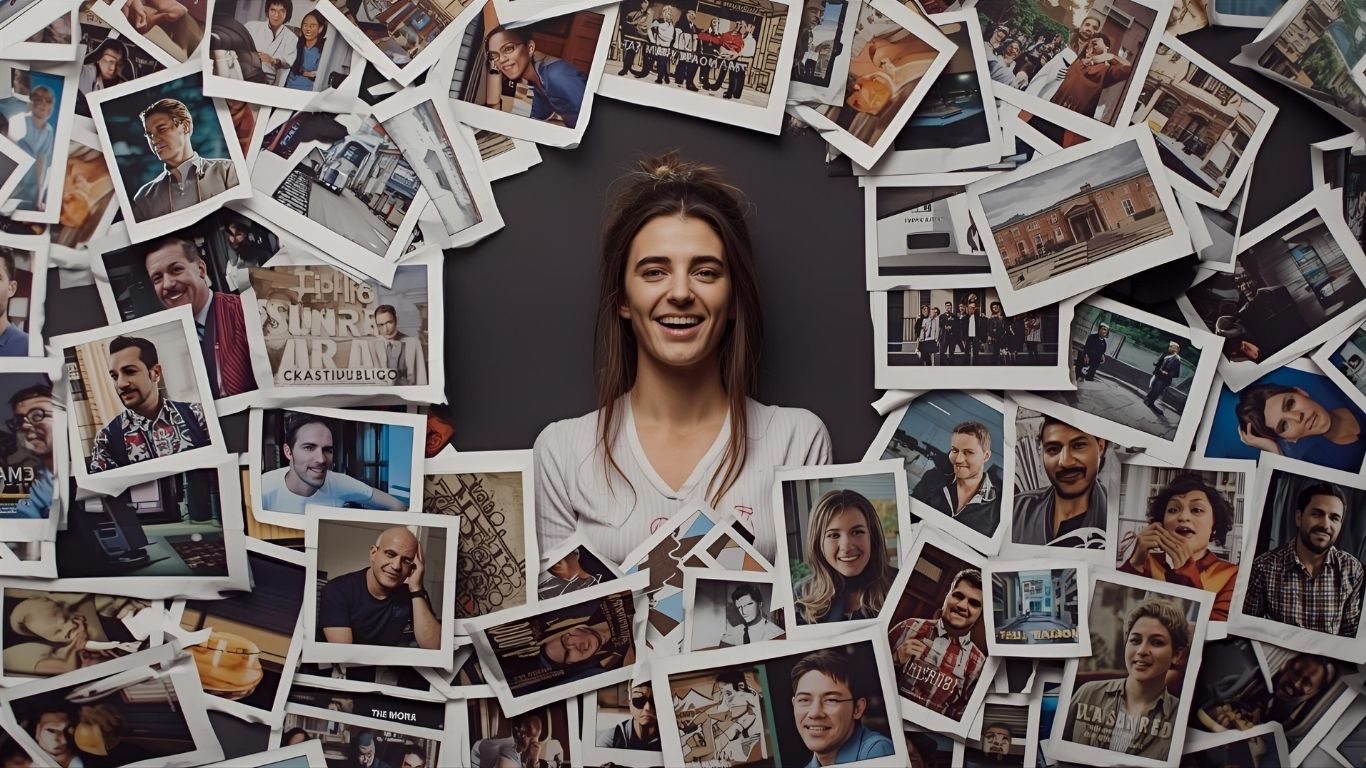How to Create Viral Content: 10 Steps to Boost Shares & Reach 🚀 #ViralMarketing #ContentStrategy
How to Create Viral Content: 10 Powerful Steps
Introduction: The Secret Behind Virality
How to Create Viral Content is a question every creator, marketer, and entrepreneur asks. Virality feels like magic, but in truth, it’s a blend of psychology, timing, and craft. Imagine dropping a single pebble into a pond and watching ripples stretch endlessly. Viral content works the same way—one idea, shared at the right moment, can reach millions.
I’ve seen posts created in minutes outperform polished campaigns that took weeks. Why? Because the viral ones struck a nerve, sparked emotion, and demanded to be shared. This article walks you through 10 powerful steps to master that formula. Think of it as not just a “guide,” but as a map to turn your next post, video, or article into something unforgettable.
And along the way, I’ll highlight affiliate and monetization touchpoints so you can transform viral reach into real revenue.
Step 1: Tap into Human Emotion
Emotion is the gasoline that powers the viral engine. Without it, your content may educate, but it won’t spread. People don’t share because they understand—they share because they feel.
Why Emotion Drives Sharing
Think back to the last viral video you shared. Chances are, it made you laugh out loud, inspired you, or maybe even annoyed you just enough to tell others. That’s the emotional hook. When people experience joy, awe, or outrage, they want others to feel it too.
Types of Viral Emotions
- Joy & Humor: Memes, funny clips, playful challenges.
- Awe & Inspiration: Motivational stories, underdog victories.
- Surprise & Shock: Unexpected twists or unusual facts.
- Anger & Outrage: Controversial takes (use with caution).
Affiliate Angle
Content that sparks emotion pairs perfectly with lifestyle or entertainment-based affiliate links. For example, embedding an “inspirational book” link under a motivational viral post feels natural and boosts clicks.
Step 2: Write Magnetic Headlines
Even the most brilliant content fails if no one clicks. Your headline is the front door; it must be bold, irresistible, and clear.
The Science of Headlines
Headlines that go viral balance curiosity and clarity. They tease just enough without misleading. For instance:
- ❌ “10 Marketing Tips” (too bland).
- ✅ “10 Powerful Marketing Secrets You Haven’t Tried Yet” (specific + curiosity + power word).
Power Words That Trigger Clicks
- Free, Proven, Ultimate, Secret, Powerful, Unbelievable, Step-by-Step, Shocking.
Use them sparingly, but strategically. They are like spices—too much overwhelms, the right amount enhances flavor.
Affiliate Angle
Headlines that promise solutions are prime real estate for linking to tools or services. Example: “5 Tools I Used to Grow My YouTube Channel” can embed affiliate links to software like TubeBuddy or Canva.
Step 3: Leverage Storytelling
Humans are wired for stories. A dry list of facts won’t stick, but a narrative will. Storytelling adds emotional weight and makes your message unforgettable.
The Hero’s Journey in Viral Content
Think of every viral story: there’s a challenge, a turning point, and a resolution. Whether it’s a small business overcoming odds or a fitness journey transformation, people relate to the struggle and celebrate the success.
Relatable Narratives That Stick
- Share personal failures and lessons.
- Use analogies (like comparing virality to wildfire).
- Bring characters to life—real or fictional.
Affiliate Angle
When storytelling, weave in product mentions naturally. For example, narrating your blogging journey and casually linking to your hosting provider (affiliate link) feels authentic, not salesy.
Step 4: Master Timing & Trends
If you want to understand how to create viral content, think about timing as your silent amplifier. Even the most brilliant piece will flop if posted at the wrong hour, while an average one can skyrocket if it catches a cultural wave.
Why Timing Matters
Social platforms run on algorithms that prioritize engagement velocity. That means if your post sparks early likes, comments, and shares, it gains visibility. Post too late, and you risk missing the momentum.
Best Practices for Timing
- Early mornings & evenings: Peak scrolling hours.
- Weekends: Higher leisure browsing.
- Real-time moments: Tie into breaking news or trends.
Trend Hijacking
Ever notice how memes from TV shows or events dominate feeds? That’s trend hijacking. Brands like Oreo nailed this during the Super Bowl blackout with their “You can still dunk in the dark” tweet—instantly viral.
Affiliate Angle
Pair trending posts with affiliate products that align with the conversation. Example: During a viral fitness challenge, drop links to workout gear or nutrition guides.
Step 5: Use Visuals & Multimedia
They say a picture is worth a thousand words—but in virality, a picture can be worth a thousand shares. If you’re exploring how to create viral content, visuals are your strongest ally.
The Power of Multimedia
- Short videos (TikTok/Reels) outperform text in engagement.
- Infographics simplify complex data into snackable bites.
- Memes humanize brands and make them relatable.
Why Visuals Work
Our brains process images 60,000x faster than text. That instant impact explains why memes, GIFs, and quick video clips spread faster than long reads.
Affiliate Angle
Use visuals to showcase products naturally. Example: An infographic on productivity tools could include subtle affiliate links to Trello, Notion, or Asana.
Step 6: Boost Shareability Factors
If you truly want to master how to create viral content, design it for shareability. Content doesn’t go viral because one person loves it—it goes viral because thousands feel compelled to pass it on.
What Makes Content Shareable?
- Relatability: “This is so me” factor.
- Utility: Tips, hacks, or shortcuts.
- Status Boosting: Sharing makes the person look smart or funny.
Technical Optimizations
- Keep formats mobile-friendly.
- Use easy-to-read fonts and layouts.
- Add visible share buttons across platforms.
Affiliate Angle
Pair shareable content with links that provide immediate value. For instance, a “10 Productivity Hacks” carousel could integrate affiliate links for time-tracking apps.
Step 7: Harness Influencers & Social Proof
One of the fastest shortcuts in how to create viral content is leveraging borrowed credibility. When influencers or micro-creators share your content, their followers adopt it faster.
Types of Influencers
- Mega Influencers (1M+ followers): High reach, expensive.
- Micro Influencers (10K–100K): High engagement, affordable.
- Nano Influencers (<10K): Extremely authentic, niche power.
Why Social Proof Works
Humans follow the herd. If thousands are liking, commenting, or buying, others join. It’s the “fear of missing out” in action.
How to Use Social Proof
- Showcase testimonials in posts.
- Display share counts or comment highlights.
- Partner with creators for shoutouts.
Affiliate Angle
Encourage influencers to share affiliate codes for your product/service. It benefits them (commission), you (sales), and their audience (discounts).
Step 8: Solve Real Problems
One of the most underrated strategies in how to create viral content is solving actual pain points. People love to share things that make life easier, because it makes them look helpful and resourceful.
Why Problem-Solving Goes Viral
Think of “life hacks.” A clever trick that saves time or money spreads quickly because it’s instantly useful. Utility is a viral accelerant.
Content Types That Solve Problems
- Tutorials & How-Tos: Clear, actionable steps.
- Checklists: Quick, scannable value.
- Comparison Guides: Help people choose the right product/service.
Affiliate Angle
Problem-solving content is perfect for affiliate marketing. Example: A tutorial on “5 Ways to Speed Up Your Laptop” can include affiliate links to SSDs or antivirus tools.
Step 9: Encourage Audience Participation
If you’re exploring how to create viral content, remember this: people don’t just want to consume, they want to contribute. Participation turns an audience into a community.
Forms of Participation
- Challenges: Dance trends, 30-day challenges.
- User-Generated Content (UGC): Encourage followers to remix or add their spin.
- Polls & Quizzes: People love quick interactive engagement.
Why It Works
When someone participates, they become emotionally invested. They don’t just share your content—they amplify it with their personal twist.
Affiliate Angle
Launch challenges tied to affiliate products. For example, a “7-Day Fitness Challenge” could include affiliate links to resistance bands or meal plans.
Step 10: Build Long-Term Virality
Virality is exciting, but without strategy, it’s just a temporary spike. The final step in how to create viral content is converting fleeting attention into long-term growth.
From Spike to Funnel
- Capture leads with email signups.
- Retarget audiences with ads.
- Publish follow-up content to keep momentum alive.
Sustain Growth
Brands that thrive don’t chase one-hit wonders—they build ecosystems. Every viral piece should point to your broader content hub.
Affiliate Angle
Use viral spikes to grow your list, then nurture subscribers with affiliate recommendations. This transforms short-term clicks into steady revenue.
Supporting Section: Data-Driven Virality
To refine your approach, measure everything. Without data, you’re just guessing at how to create viral content.
Metrics to Track
- Engagement rate (likes, shares, comments).
- Virality coefficient (how many new viewers each sharer brings).
- Conversion rate (clicks → signups → sales).
Affiliate Angle
Analytics tools themselves can be monetized via affiliate links. Example: promoting SEMrush, Ahrefs, or social analytics dashboards.
Supporting Section: Avoiding Virality Pitfalls
Not all virality is good virality. Sometimes, the wrong type of attention can backfire.
Common Pitfalls
- Clickbait: Short-term gain, long-term distrust.
- Insensitive Content: Humor that crosses lines.
- Unscalable Traffic: Viral hits that can’t be monetized.
Affiliate Angle
Position affiliate tools as “solutions” here—e.g., courses on ethical marketing, or PR management software.
Supporting Section: Distribution Strategy
Even the best content needs wings. A robust distribution plan multiplies your chances of going viral.
Tactics
- Cross-post across platforms (Twitter, TikTok, Instagram).
- Repurpose content (a blog into a video, a video into a carousel).
- Balance organic growth with paid boosts.
Affiliate Angle
Content distribution guides are ideal for affiliate promotions—think scheduling tools like Buffer or Hootsuite.
Conclusion: Your Path to Viral Success
Learning how to create viral content is not about luck—it’s about method. From sparking emotion to crafting irresistible headlines, from leveraging storytelling to building funnels, the 10 powerful steps you’ve explored here form a repeatable framework.
Remember: virality is not just about reaching millions. It’s about impact—making your message resonate so strongly that people feel compelled to share. If you follow these steps with authenticity and strategy, your content won’t just spread—it will stick.
And when it sticks, you can monetize it, scale it, and transform fleeting attention into enduring growth.
So the next time you sit down to create, ask yourself: What ripple will I set in motion today?
🔹 Summary
- How to Create Viral Content isn’t luck — it’s psychology, timing, and strategy.
- Emotion drives virality: joy, awe, humor, or even outrage spark shares.
- Strong headlines act as click-magnets that unlock viral potential.
- Storytelling transforms dry ideas into unforgettable narratives.
- Timing and trend hijacking amplify reach dramatically.
- Visuals, memes, and videos dominate engagement across platforms.
- Shareability depends on relatability, utility, and mobile-first design.
- Influencers and social proof accelerate adoption and credibility.
- Problem-solving content (tutorials, hacks, guides) spreads fastest.
- Participation (challenges, polls, UGC) makes audiences co-creators.
- Long-term virality comes from funnels, follow-ups, and nurturing.
- Data helps refine strategy — measure engagement, shares, conversions.
- Avoid clickbait pitfalls: prioritize value over cheap tricks.
- Distribution multiplies virality — repurpose and cross-platform sharing.
- Affiliate/CPA opportunities can turn viral reach into lasting revenue.
🔹 FAQs
1. What is the first step in learning how to create viral content?
The first step is understanding your audience’s emotional triggers. When you know what makes them laugh, cry, or feel inspired, you can design content that resonates and spreads.
2. Does viral content always need to be funny?
Not at all. While humor works, inspiration, awe, or even problem-solving guides can go viral. It’s about sparking strong reactions, not just laughter.
3. How can small creators use these viral strategies?
Start by focusing on niche audiences. Smaller communities often engage more deeply, and once momentum builds, larger audiences follow naturally.
4. Is timing really that important?
Yes. Even the most powerful idea can flop if posted at the wrong time. Viral content thrives when it meets the right audience at the right moment.
5. How do I know if my content is shareable?
Ask yourself: would someone proudly share this to look smart, funny, or helpful? If the answer is yes, you’re on the right track.
6. Should I use clickbait titles?
Clickbait can backfire. Instead, use curiosity-driven headlines that deliver real value. Audiences reward honesty and relevance.
7. Can visual content outperform written content?
Absolutely. Videos, memes, and infographics often outperform text because they’re quick to consume and easy to share.
8. What role do influencers play in virality?
Influencers act as accelerators. When they endorse or share your content, their audience instantly pays attention.
9. How do I monetize viral content?
Integrate affiliate links, promote products, or build funnels to capture leads. Virality is best when paired with a revenue strategy.
10. Can educational content go viral?
Yes, if it solves a problem quickly. Tutorials and guides are highly shareable because people love passing along useful hacks.
11. How often should I try to create viral content?
Aim for consistency. Not every post will go viral, but frequent attempts sharpen your skills and increase chances.
12. Is virality possible without paid promotion?
Definitely. Organic virality is possible when you master emotion, timing, and shareability. Paid boosts just speed the process.
13. Do hashtags matter for virality?
Yes, but strategically. Use niche-relevant hashtags to target engaged communities rather than spamming broad, overused tags.
14. How can I track viral success?
Measure engagement rates, shares, virality coefficient, and conversions. These metrics show if your content is spreading effectively.
15. Is virality sustainable long-term?
Not by itself. You must funnel viral traffic into lasting assets like email lists, communities, or subscriptions to ensure growth.
Discover More with These Expert Resources
To strengthen your understanding of how to create viral content, it’s essential to learn from trusted authorities. Below are hand-picked resources that expand your knowledge, while guiding you through proven strategies.
HubSpot: Viral Marketing Explained – Learn the psychology behind viral campaigns and discover why timing and emotion matter most.
Neil Patel: The Ultimate Guide to Viral Marketing – Explore actionable steps from one of the most recognized voices in digital marketing.
Buffer: Social Media Timing Research – Understand when to post for maximum visibility and engagement across platforms.
Content Marketing Institute: Storytelling Insights – Dive into storytelling methods that brands use to connect deeply with their audiences.
Moz: Beginner’s Guide to SEO – Improve your SEO foundation to ensure your viral content ranks well in search engines.
Think with Google: Consumer Insights – Access cutting-edge research on consumer behavior and digital marketing trends.
Sprout Social: Hashtag Strategy Guide – Master the art of hashtags to boost shareability and discoverability.
Ahrefs Blog: Content Distribution Strategies – Learn how to effectively distribute and repurpose content for wider reach.
Backlinko: Viral Content Case Studies – Study real-world examples of viral campaigns that scaled globally.
Hootsuite: Social Media Trends Report – Stay ahead by keeping track of industry-wide shifts in social media strategies.
🔹 Blog Recommendation
If you enjoyed this article on how to create viral content, I recommend exploring more insights over at GetRizwan Blog. You’ll find practical tips, marketing strategies, and creative ideas that go hand-in-hand with viral content mastery.
🔹 Linked Paragraphs
Services
To bring your ideas to life beyond theory, explore the services at GetRizwan. From branding to content strategy, these services are designed to transform concepts into campaigns with viral potential.
Portfolio
Seeing is believing. Take a look at the project portfolio, which showcases successful campaigns, design projects, and digital strategies that prove viral methods can be applied in real-world contexts.
Shop
If you’re looking for tools, resources, or digital products that can accelerate your creative journey, the GetRizwan shop offers carefully curated solutions tailored for creators and marketers.
LinkedIn
To stay updated on trends and professional insights, connect directly on LinkedIn. This network provides ongoing tips, case studies, and opportunities to collaborate with like-minded professionals.






